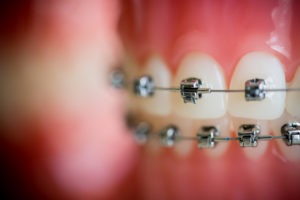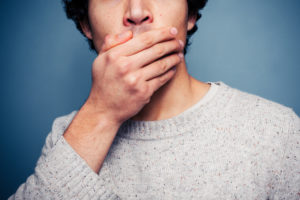Modern braces make emergencies very rare for most people, but they do happen on occasion. As with any medical field, the patient’s health is the top priority in orthodontics. That’s why orthodontic emergencies should be treated accurately and rapidly; if they aren’t, then you could risk long-term damage. Whether it’s a problem with your braces, a chipped tooth, or something more serious, you should have an idea of what to do in a time of need. At Dudley Smiles, we take these situations very seriously. That’s why we’ve created a page on our website to offer advice on some common problems patients might experience after having braces installed.
In this post, we’ll go over some rapid solutions to a few braces-related problems we often hear about. These are meant to be fixes for minor issues and techniques to minimize damage while you’re waiting to see a professional. If something seems very unusual or you experience severe pain, your first move should always be to contact your orthodontist. With that said, let’s get into some potential orthodontic emergencies.
Loose Brackets
If you have braces, your brackets are attached to your teeth with an adhesive. While it’s very strong, brackets can certainly come loose if you eat sticky, hard, or crunchy foods. This can also happen if your braces are impacted during sports, from a fall, or from another contact along similar lines. Sometimes, there’s just nothing you can do to avoid this outside of wearing a mouthguard. This being the case, loose brackets are one of the most common problems people come across after getting braces.
If you find yourself with a loose or detached bracket, there are a few things you can do. Before anything else, you should schedule an appointment to see your orthodontist a
Loose Wires
Just like brackets, your braces wires can become free. Typically your wires fit snugly along horizontal slots on your brackets, but sometimes things get out of alignment. This can happen when you eat foods that are unfriendly to braces or when you get hit in the mouth. This can cause very unpleasant irritation, and you’ll likely find yourself looking for the quickest solution possible.
Often when this happens, you’ll be able to push the wire back into place with a pencil eraser, Q-tip, or the sterile pair of tweezers. It might take a few attempts to get it into a comfortable position, but with you should be able to get it eventually. In some cases, you might not be able to straighten things out yourself, and the wire is still unbearably poking and prodding some sensitive areas of your mouth. As a last resort, you can cut a small section of wire with sharp clippers. If you need to do this, be extremely careful! Put gauze or paper towels around the area where you’ll be snipping, so you don’t accidentally swallow the metal.
Poking Wires
If your brackets are in place, but you still feel some uncomfortable poking, you should try using wax on the area as a first resort. You can try moving it to a comfortable position with the same Q-tip or pencil eraser method listed above, or even clipping it if all else fails.
Mouth Irritation and Sores
If you’ve just had braces put on, your mouth is probably feeling rather odd. Your gums, teeth, and cheeks will likely be sore for about 3-5 days after your installation appointment. This should quickly subside, but there are a few things you can do in the meantime to help with the pain. The first of these is to just take an over-the-counte
Another option is to rinse your mouth with a warm saltwater solution. Just mix one teaspoon of salt with about 8 ounces of warm water and swish vigorously. This technique is great for sore gums and teeth.
If you have a particularly irritated area, try applying a product like Orabase, which can be found at most drug stores. Also, remember to use the wax provided by your orthodontist to the bracket or wire that’s doing the most rubbing. If you’ve got a particularly painful case that doesn’t feel normal, you should contact your orthodontist as your braces may need to be adjusted.
After a week or two, most patient’s mouths have adjusted to the braces and toughened up. Once you get to this point, you’ll probably forget you’ve got the braces on at all.
Get in Touch
The majority of problems you might experience with your braces during the first few weeks of treatment can be solved at home. That said, you shouldn’t hesitate to contact your orthodontist if you’re unsure about anything. At Dudley smiles, our patients’ comfort and certainty concerning treatment is our staff’s primary concern.
While we’ve only gone over braces-related emergencies in this post, Dr. Dudley and the rest of the team have a full breadth of information concerning the orthodontic field. It’s what we do, so don’t hesitate to get in contact with us. For residents of the Southern Seattle area, we’re a premier choice when it comes to proper, effective orthodontic treatment.

